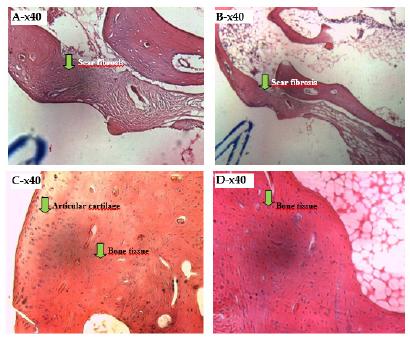PURPOSE:
To assess the histological response of damaged osteochondral tissue in the femoral condyles of rabbits after repairing the wounds with sugar cane biopolymer gel - compared to the control group.
METHODS:
The study investigated 16 New Zealand rabbits, at 90, 120 and 180 days after surgery. In all the animals, a lesion of 3.2 mm in diameter and 4 mm deep was induced in each right and left femoral condyle. Each animal has provided both knees, divided into medial and lateral condyle, resulting in 64 samples. 32 knees were divided into two groups: Right knee, medial and lateral condyles, filled with biopolymer; Left knee, medial and lateral condyles, unfilled. The anatomical specimens were removed, and subjected to histological techniques and morphometric and statistical analysis.
RESULTS:
In all the periods of the group under study an inflammatory reaction mediated by giant cells and mononuclear cells was found, while in the control group there was early healing produced by fibroblasts and few mononuclear cells with statistical significance between groups.
CONCLUSION:
The biopolymer gel caused an inflammatory reaction mediated by giant cells and mononuclear cells while the control group there was cicatrization mediated by fibroblasts.
Osteogenesis; Cartilage; Histology; Biopolymers; Rabbits






